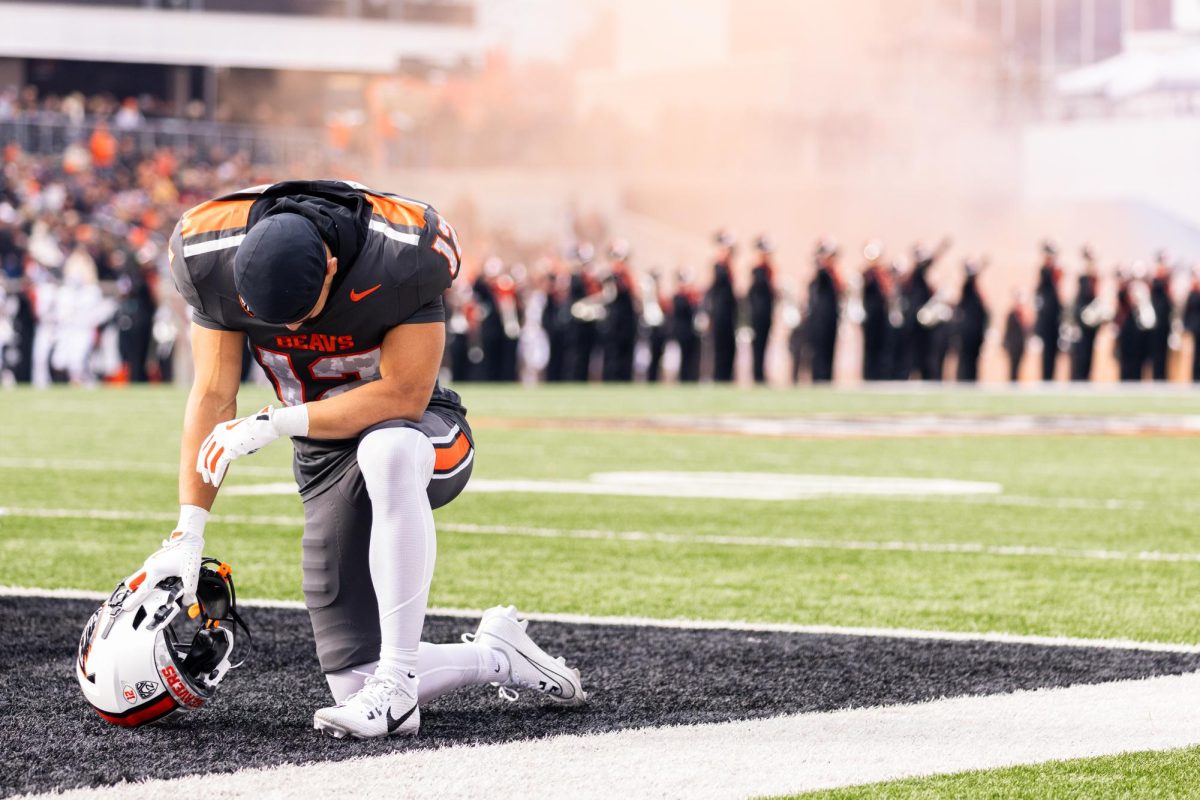College football is uniquely popular in the U.S. but to fully understand the collapse of the PAC-12 a rare and niche knowledge of athletics is required. It is my aim to familiarize those who might not normally know or care about athletics with the consequences of the PAC-12’s decline. It may seem like a “football problem” from a lay perspective, but Oregon State University students, athletes, professors and non-football fans alike are being impacted by this fiasco.
Before we get into the minutia, what even is an athletic conference?
They are a group of schools which agree to compete against each other in athletics. Typically, schools want to be in a conference which complements their strength in academics, their athletic programs, student population, geographic location and competitive history. Considering these factors, an array of university presidents, athletic directors and other school administrators work together to cultivate a successful and lucrative sports league.
OSU has belonged to the PAC-12 since the conference’s inception in 1915 and has sown close athletic ties with institutions in Washington, Oregon, Idaho, Arizona, Colorado, Utah and California.
In summer of 2022, political maneuvering and financial motivations drove University of Southern California and University of California Los Angeles to leave the PAC-12. Without two of the conference’s most profitable schools, fear of decreased revenues and smaller media deals inspired a tidal wave of PAC-12 schools to jump ship for other conferences. Today, only OSU and Washington State University remain in the PAC-12.
The same economic fears which drove other PAC-12 schools away are now mercilessly bearing down on OSU and WSU. This may seem like hyperbole, but I assure you the dissolution of the PAC-12 is an existential threat to both universities.
On Sept. 26, Oregon State President Jayathi Murthy along with Vice President and Athletic Director Scott Barnes, released a statement on the school’s financial position.
“Our estimates are based on the best information we have available, including a comparison between media rights revenue and overall revenue streams of a typical Power 5 conference school (like one in the PAC-12) and a Group 5 conference school,” the statement said. “Looking ahead to fiscal year 2025, we expect that total revenue to OSU Athletics could decline by as much as 44%.”
OSU recently completed a $153 million renovation to the west side of Reser Stadium, which was intended to bolster athletic revenue, but in the absence of a competent athletic conference, it is difficult to imagine enough fan engagement being generated to make this a wise investment.
Additionally, OSU has over $400 million in ongoing major capital construction projects, including the development of upper division and graduate student housing, a center for the creative arts and substantial renovations to Gilkey Hall. Large construction projects are not abnormal for a university the size of OSU, they are part of growing a university and maintaining its capabilities, perceptions and income. However, the collapse of the PAC-12 has brought ambiguity to the revenue streams OSU depends on to maintain its growth.
What’s more, OSU is still recovering from diminished athletic profits due to limitations COVID-19 placed on event attendance in 2020. In the same statement as above, administrators disclose that OSU advanced the athletic department $31.8 million, “to sustain operations with the expectation that it would be repaid over time based on historic revenues.”
Anytime there is an expectation of “historic revenues”, an institution will be stretched thin. This strategy of pre-mature growth is fairly normal from an economic perspective, but it creates tension that will snap at the slightest interruption, and the dissolution of the PAC-12 is closer to a shotgun blast than a slight interruption.
On an OSU website dedicated to chronicling the renovation of Reser Stadium, Barnes is quoted saying,
“By completing Reser now we ensure the long-term financial sustainability for the OSU Athletics Department and all student-athletes. Increased revenue will provide financial stability throughout OSU Athletics where 70% of the revenues required to operate 17 women and men’s varsity sports are generated from football and Reser Stadium activities.”
Read today there is no small amount of irony in Barnes’ words. The desire to advance OSU on the back of the athletic department is a root cause for the difficulties OSU is now facing.
The fact that 70% of athletic operating costs are generated by football and Reser Stadium tells me two things: football is the key focus of the athletic department, and the athletic department is largely dependent on football to support its other sports.
I failed to mention one thing about athletic conferences: non-football sports receive little consideration, a conference lives and dies off football alone.
There is nothing which makes football inherently more profitable than other sports like men’s basketball, women’s diving, women’s rowing, etc., but rather it’s the size of investment and focus on a sport which drives its revenues. Going forward, if OSU were to allot a more equitable distribution of resources among other similarly deserving sports, perhaps a more sustainable athletic department would arise.
In the meantime, will OSU students and faculty be forced to reconcile any financial shortcomings?
















































































































